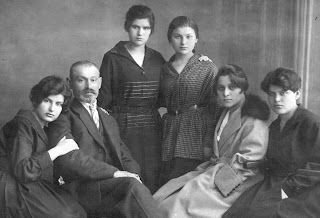The conference committee reminds attendees about upcoming deadlines:
- The deadline for the Chicago Jewish Roots tours and cemetery transportation is Friday, August 1. Depending on reservation numbers received, some tours and cemetery trips may be cancelled. While limited number of tickets may be available during on-site registration for these tours and the cemetery trips, don't count on it.
- The deadline for Breakfasts with the Experts and for SIG luncheons is Friday, August 8. No breakfast or luncheon tickets will be available after that date. The deadline also applies to the Banquet, although limited additional tickets may be available for sale during on-site registration on Saturday evening, August 16, and Sunday morning, August 17. Require kosher banquet meals? If so, don't wait to register.
- There are no deadlines for computer workshops and Spertus Museum tours, but each is limited to only 25 participants. If space is available, conference-goers may sign up during on-site registration. Popular workshops have generally sold out before advance registration ends. Conference attendees interested in a certain workshop or tour should sign up now to avoid disappointment.
Register for optional programs at 'Registration Update' on the conference website.
- The deadline for the Chicago Jewish Roots tours and cemetery transportation is Friday, August 1. Depending on reservation numbers received, some tours and cemetery trips may be cancelled. While limited number of tickets may be available during on-site registration for these tours and the cemetery trips, don't count on it.
- The deadline for Breakfasts with the Experts and for SIG luncheons is Friday, August 8. No breakfast or luncheon tickets will be available after that date. The deadline also applies to the Banquet, although limited additional tickets may be available for sale during on-site registration on Saturday evening, August 16, and Sunday morning, August 17. Require kosher banquet meals? If so, don't wait to register.
- There are no deadlines for computer workshops and Spertus Museum tours, but each is limited to only 25 participants. If space is available, conference-goers may sign up during on-site registration. Popular workshops have generally sold out before advance registration ends. Conference attendees interested in a certain workshop or tour should sign up now to avoid disappointment.
Register for optional programs at 'Registration Update' on the conference website.





























